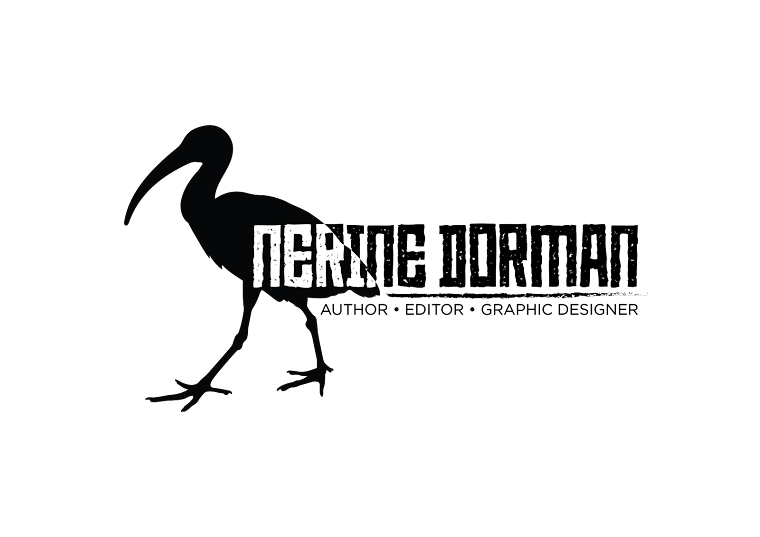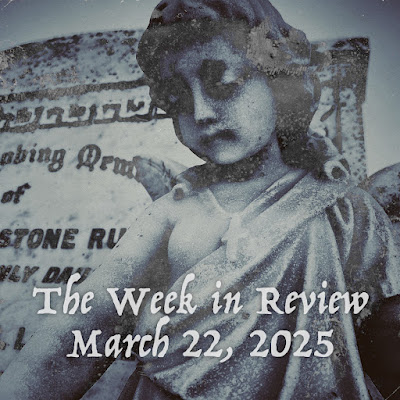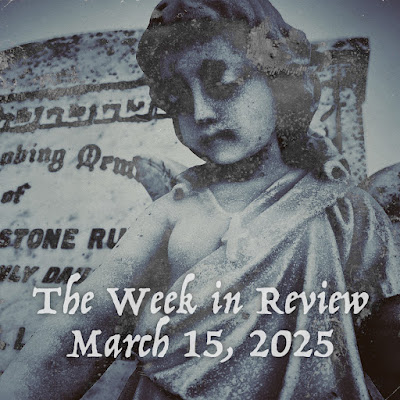Saturday, April 5, 2025
The Week in Review – April 5, 2025
Saturday, March 29, 2025
The Week in Review – March 29, 2025
This has been one of those weeks where I really don't have much to say – pretty much subsumed by work with a pack of brutal deadlines. I broke all my previous records and proved that when I have a fire lit under my arse I can type 2,500 words an hour. I don't recommend doing it, but I still have it in me. This was for an alt text job that I misjudged the number of images I had to write descriptions for. That was *fun*. Not. But hey, it pays the bills.
Anyhoo, I've not done nearly as much reading as I'd have liked to. I've just been so knackered in the evenings, and honestly, when I've spent my entire day reading and editing and writing, the last thing on the face of this planet I can bear doing is more reading. Nope, I watch short prank videos on IG. And chortle like a lunatic.
But today being my birthday, I'm taking things slow. The husband creature and I went to buy some nice things at the shops and we've got a few friends coming around for tea. Which is something we don't often do. My brain is itching for me to write, and my next WiP is nibbling at my grey matter. I've got some ideas I'd like to weave in. Mostly, I want to make some acerbic commentary about current global events. But it's good, also, that I'm not actively writing today. I need a break. I'm feeling a bit crispy at the edges.
And yeah I know, I'm blogging today, but I enjoy this; it's one of my guilty pleasures. In a few years' time I might look back at these words and cringe, but for now it's a valuable outlet. I'm not so vain to think I'll ever have a biographer looking through my dog ends of thoughts and opinions. But I'm not likely to inflict my memoirs on anyone either. Haha.
Which reminds me of a a writers' meeting I once ran. There were a dozen participants, of whom only one was a teen. The rest were all retired. There was the one prerequisite man with faulty hearing aids predictably sitting the furthest away from me (he was writing a political conspiracy theory thriller – of course he was). The rest were all ladies who were either writing poetry or their memoirs. The teen was sitting next to me, looking rather wide-eyed at all the older folks, and she leaned over to whisper, "What is a memoir?" At which point I laughed a little too loudly before I explained it to her.
We all want to be remembered. Have our names memorialised on stone. But when I walk in the local cemetery as I am wont to do, so many of the headstones are so badly eroded you cannot see the names. Particularly tragic are the ones that were initially intended as shared plots, with the one spouse's details on the joint headstone blank. There's a story there, except no one's around to tell it. Or the sad little stones, choked in long grass, of the little children who lived perhaps a day or two, who were so loved and wanted by their parents that they had their names carved into pale marble with a bible verse. The parents are now in the dirt, too. All gone. And homeless people make their beds on the graves.
I guess I'm always slightly maudlin about the ephemeral nature of life, conscious of trying to pack as much living into each moment before it's gone. I'm reminded of that immortal line from Highlander, when the Kurgan tells Connor McLeod: "It's better to burn out than to fade away" – and that's kinda been my ethos over the years.
Though now approaching 50 I have learnt to pace myself. 47 is plenty good to get stuff done, and I would prefer to be able to go at a decent pace for a good few years still. I like to remind myself that Robin Hobb wrote her breakout novel Assassin's Apprentice at age 47, when she'd already written and published countless other novels under the name Megan Lindholm. So perhaps there is hope for me yet.
And lastly... Because this is a bit of a rambling mess of a post. I have been slowly putting my ebooks up at my Ko-fi shop because honestly, I'm tired of Jeff Bezos getting more fancy yacht money out of me. If you've yet to read any of my books, do consider buying one of mine or simply buying me a cup of coffee just for shits and giggles. It being my birthday and all that...
Thursday, March 27, 2025
Almost Human by Lee Berger and John Hawks
Saturday, March 22, 2025
The Week in Review – March 22, 2025
THE BIG NEWS, OF COURSE...
Moving on from Amazon
Tuesday, March 18, 2025
Witchmark (Kingston Cycle 1) by CL Polk
Saturday, March 15, 2025
The Week in Review – March 15, 2025
This week's very much been a case of 'butt on chair, fingers on the keyboard', and to an extent, I've been able to block out the awfulness of the world at large by focusing on work. It's not always easy, but rather concerning myself with the aspects of my life I have direct control over is better for my long-term mental health. I admit that I'm very lucky to be in the position that I am – working from home, doing work that I'm passionate about – whether it's designing printed assets for a large, multinational pet food company or editing a Daddy Dom book. My life is a far cry from what it was in the run-up to 2015, where I was depressed as all heck and stuck in a career in newspaper publishing that was fast going down the tubes. Life isn't boring. Also, I don't have a toxic work environment.
ABOUT LAST WEEK...
So, I was super anxious about my book launch at the V&A Waterfront Exclusive Books last week. As it turns out, I had nothing to worry about. It was AWESOME. Thank you so much to everyone who contributed to making the event successful. And there were OREO CUPCAKES.
But seriously, if you're yet to pick up a copy, hie yourself down to your nearest branch of Exclusive Books or Wordsworth, and if they don't have a copy of The Company of Birds, order it. For too many years my South African readers have complained that it's been so difficult to get my books in print in South Africa, and that's all set to change as I'm now focusing rather on my local readers.
With the world socio-economic situation being well [gestures vaguely around her] and with paper and fuel prices being horrific, it makes sense to focus on being sustainable and keeping it local. Late-stage capitalism has basically broken this planet. But anyhoo, let this not turn into a frothing rant.
As an author, I'm in a really happy place right now. I've got the long-term ghost-writing project that is helping to keep the lights on, and I've got multiple other projects on the boil. My editing income is steady, and I've enjoyable QA and alt-text writing work from a big publisher in the UK. Nerine in 2015 could only dream of what Nerine in 2025 is doing.
And on to Egyptian stuff...
So, The Egyptian Society of South Africa has its next meeting happening at the end of the month.
In 1798 Napoleon launched a military expedition to Egypt, leaving France with 335 ships, the French army and 167 scholars that included many engineers, writers, artists, linguists, scientists and mathematicians. Although the expedition was a military disaster, with Nelson having destroyed the fleet, it revealed the splendour of a forgotten civilisation and gave birth to Egyptology.
This is just a taster of the lecture "Napoleon and Ancient Egypt" offered by Peter Loyson on March 25, at 7.30pm at the St George's Grammar School, Richmond Road, Mowbray. Parking is available on the premises. Free for members of TESSA, Visitors pay R30. Refreshments R10.
I've really enjoyed being an active member of TESSA again because oh my goodness, the library is just brimming with books that are giving me all the joy. Plus I get to hang out with people who are just as passionate about ancient Near Eastern history as I am.
How do I become a better writer?
The other day on Threads I encountered a heartbreaking post from a writer who'd had a bad review. They'd been told that the idea behind the story was great but that the writing could have been better. They were at a loss at where to start. Now, the advice I give to anyone who wants to take their craft seriously, is that all good writers are, first and foremost, rabid readers.
And I don't just mean reading in the genre that you want to write – I mean reading all sorts of books, be they the most recent TikTok sensation, a classic, a crime novel, something non-fiction ... A good author is conversant with more than their chosen genre. They have a good sense of style. They choose words not only for meaning but also for how they'll sound. And to this, I also advise you to read and listen to poetry, and to listen to audiobooks narrated by gifted human voice artists.
And then the hardest part: put what inspires you in others writing into practice. Be kind to yourself if you feel that you fall short. Get to understand what areas of your writing need improvement and be aware of them when you write new pieces so that you don't keep breathing life into the same gremlins over and over again.
A good writer is someone who is constantly evolving and reinventing themselves. I look back at my earlier writing and I often wonder what on earth I was thinking when I did certain things – things I'd certainly never do now. And I'd like to think that I am a better writer for having made all those happy accidents.
If you're looking to embark on a career as a writer and don't know where to start, I do offer affordable, one-on-one coaching. Drop me an email at nerinedorman@gmail.com, and let's chat.
Saturday, March 8, 2025
The Week in Review – March 8, 2025
At the time of writing, it's a few hours away from my big book launch at the V&A Waterfront branch of Exclusive Books. To put it rather indelicately, I'm kakking bricks. The last time I had a launch at an EB it was the larney one up in Joburg at the fancy mall where they have those hair salons where you have to take a second mortgage to have your highlights done. And that was back in 2019 when I won gold in the Sanlam Prize for Youth Literature. So if you're reading this now, a few days later, I hope I acquitted myself well and that things weren't a complete clusterfuck. This being a Cycle Tour weekend and all, which means I somehow have to negotiate Cape Town's foreshore to reach the Waterfront.
ANYHOO...












